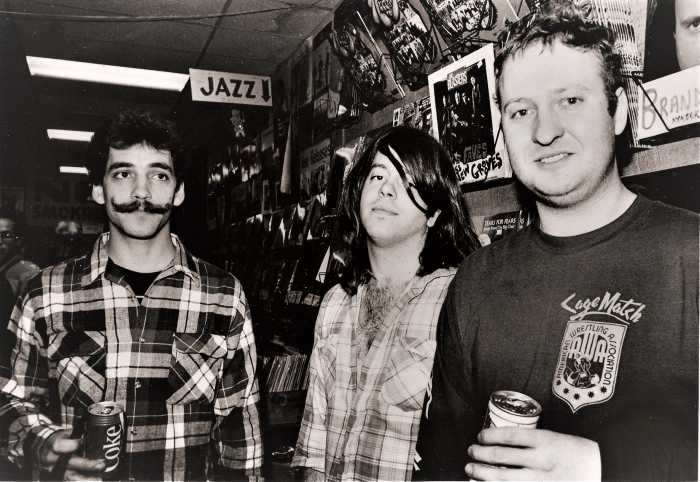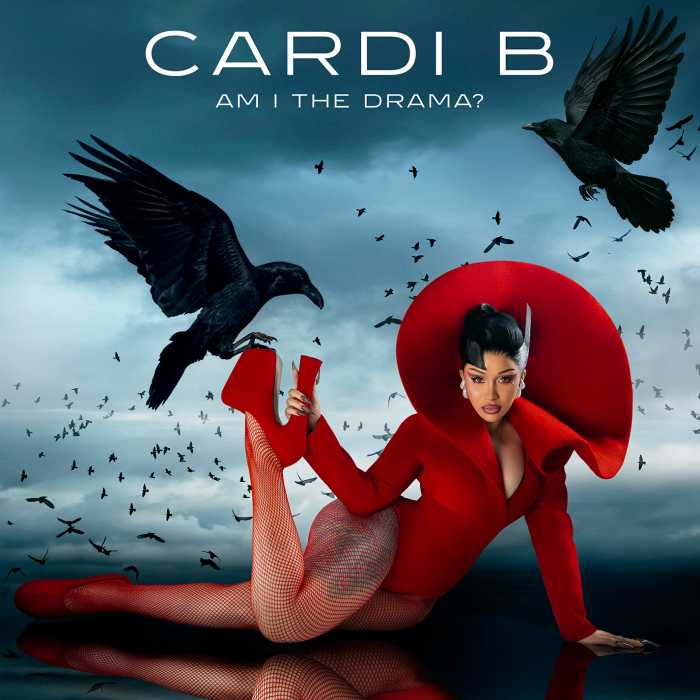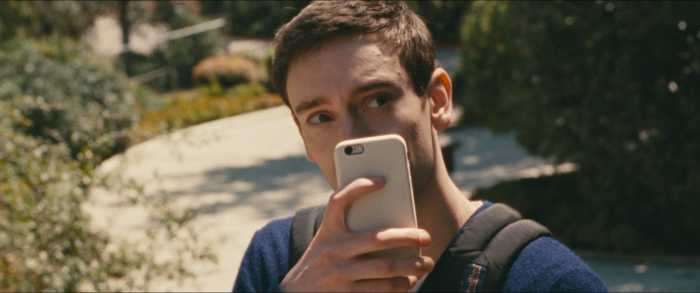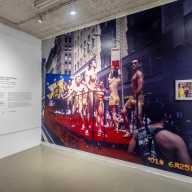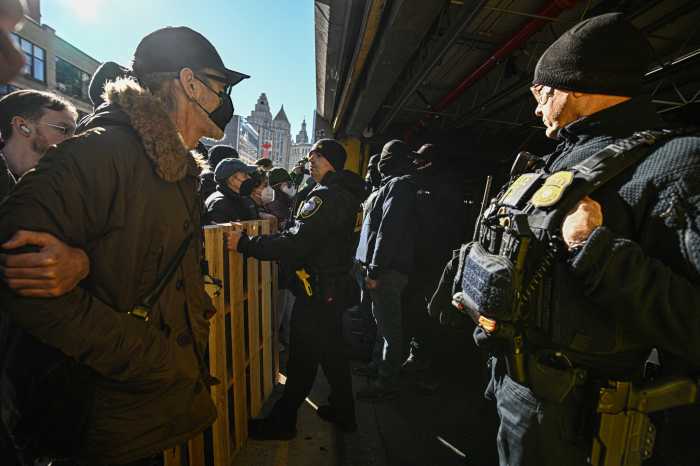Whoever said Paris is a woman was certainly correct. Although bitterly cold and ridiculously expensive (a tiny can of Coke Zero went for the equivalent of $3 on the street), the City of Light this past holiday season retained its beauty, elegance, and charm –– strengths personified by its celebrations of three distinctive femmes.
I rushed to the Vionnet exhibit at Musée des Arts Décoratifs and drank in the genius of this greatest of dressmakers, who perfected the bias cut and, after decades in the business, in one last grand chic gesture, shut her doors forever just before World War II.
City Of Winter Light, Coward Heaven, Kurosawa gem, Forbidden fun
It was a state-of-art show, with the captions on little screens, which gave you the info then morphed into a gown’s original sketch and then a photo of it. I do wish, though, it had been a little richer in context, as Vionnet definitely contributed in a major way to the glamour of the early 20th century, her clientele ranging from the highest courtesans to movie stars.
In the still gay Marais, where the boys continue to meet up at Open Cafe and Cox Bar celebrated its 15th anniversary with a massively crowded outdoor beer bust, I caught a fascinating exhibit at Baudoin Lebon Gallery about Virginie Élisabeth Louise Charlotte Antoinette Thérèse Marie Oldoïni, the Comtesse de Castiglione (1837-99). She was probably the world’s very first supermodel, whose rise to fame was scrupulously recorded by the then nascent art of photograph — namely by lenser Pierre-Louis Pierson. With Pierson, she posed for some 400 photographs, including some risqué shots of her bare legs and feet, that captured the many lavish looks that make Madonna look like a minimalist.
The comtesse became the mistress of Napoleon III, pleading the case for her native Italy’s unification, and ended her days a recluse on the Place Vendome, where mirrors were banished lest they expose her faded beauty. She was evidently fascinating, with long blonde hair and eyes that changed from green to violet, but in the photos she came across as rather looking like sharp-featured actress Fiona Shaw.
At Espace Landowski, I caught “Brigitte Bardot: Les Annees Insouciance,” the most spectacularly comprehensive exhibit of any single actress I have ever seen. It had everything, from her earliest baby mementos to displays of her 48 films and extensive recording career, with endless painted portraits and photographs commemorating her revolutionary, liberated persona, which completely shed the haute bourgeoise trappings of diva predecessors like Danielle Darrieux and Michele Morgan. With her tousled, dirty blonde mane, and nudity, she lived as independently as any man, and an entire room was devoted to the many men in her life.
All this glamour and license ended in a sobering chamber devoted to her work for animal rights, but I noticed the show skipped over her controversial views about immigration and Islam, which have caused her to be fined for inciting racial hatred, not to mention a certain homophobia she expressed in her autobiography: “They jiggle their bottoms, put their little fingers in the air and with their little castrato voices moan about what those ghastly heteros put them through.”
The city was all dressed up for the holidays, with Galeries Lafayette’s gigantic gift-wrapped packages suspended from the famed Art Nouveau stained glass ceiling quite awe-inspiring and, leave it to the French, the presence everywhere of twinkling lights, which were not the garish white we know here, but a blue tinge that made everything that much more coolly refined. There were no signs of the recession on the Champs Elysees, where the Louis Vuitton store was packed with Christmas shoppers, but a rail strike wrought havoc with suburban travel. That did not prevent me from going to the chateau at Saint-Germain-en-Laye, where Louis XIV was born and Mary Stuart holed up when she was Queen of France, and which is now a fantastic museum of ancient times.
After seeing Proust’s famous cork-lined bedroom at my favorite, the free Musée Carnavalet, I relived his posh epoch by strolling through two magnificent Paris mansion-museums — Musée Jacquemart-André (where I ran into soprano Natalie Dessay, taping a television program) and Musée Nissim de Camondo, both opulent homes of wealthy Jewish patrons obsessed with 18th century art and décor. The latter was especially moving, as this labor of love was finally completed just a few years before Nissim, the son of the family, for whom the museum is named, was killed in World War I. Daughter Beatrice, with her husband and two children, would later perish at Auschwitz.
I met a wonderful, very serious artist, ex-pro basketballer Gregory Morizeau, whose sculptures, fashioned from found objects, many of them rusting auto parts, have an uncompromising yet lyrical power. His work made the piffle in so many New York galleries look just that. (Check them out at youtube.com/watch?v=GO4FaBsZAIY.)
I had some decent French meals (despite my perverse preference for New York’s own French restaurants), and must admit to paying a few visits Chez McDo, which is what they call the Golden Arches. The local population has totally embraced them, and they have delightful service, are great places to people watch, and are pretty luxe, with their natural wood walls and recessed lighting.
We beat the cold by often repairing to the Bear’s Den in Les Halles, full of friendly, real guys infinitely preferable to those skinny rodentious types who crowd Le Marais, one of whom actually said to a not even fat friend of mine, “Why do you eat so much?” At the Bear’s Den, you can relax in the awesomely deep 16th century basement that serves as alternately naughty room and disco, but for real kicks, Sun City remains the city’s best bet, with its fabulous Indonesian, Buddha-laden décor and scores of happy, horny guys at every hour.
By far the most annoying sight in Paris were these characters tackily dressed up as King Tut, who’d disconcertingly show up, say, on the steps of Sacre Coeur to pose for pictures, but only if hapless tourists pay them. If anyone tries to grab a free shot, they bow down low. I was sorely tempted to kick their asses down all those steps from Montmartre.
Back in New York, I was enchanted by the overall generosity of “Brief Encounter” at St. Ann’s Warehouse. In a time when, especially on Broadway, tickets have $200-plus top prices for productions with no sets and stripped down orchestras of nine pieces (when the actors themselves aren’t tootling tubas), to be greeted as you leave the show by one of the hard-working actors proffering a plate of cucumber sandwiches to enjoy while her cast members regale you with a lovely music set in the lobby was irresistibly charming. As was the entire song-spattered production, brilliantly directed by Emma Rice, which both deconstructs and utterly enriches Noel Coward’s slim playlet as well as the famous David Lean 1946 film version, while completely immersing you in a Cowardian universe.
I loved Annette McLaughlin as the snippy café proprietress and astonishingly versatile Joseph Alessi in a variety of roles, while Stuart McLoughlin has the glorious voice of a true star. From the moment he began the charming verse to Coward’s “Any Little Fish,” I was simply a goner.
Both Harold Prince and Stephen Sondheim were in the audience, and I sincerely hope both of them were inspired by it and reminded, in the case of the former –– sometimes known to leave the stage maneuvering to underlings and phone it in –– of what real direction can be, and for the latter, the fact that songs can possess both a discernible melody and lyrics that don’t whomp you on the head with self-aware cleverness.
Film Forum celebrates director Akira Kurosawa with a month-long festival (filmforum.org), a highlight of which is his 1949 detective movie, “Stray Dog.” It’s a singularly humane noir, set in that compelling post-World War II period during which Japan struggled to recover and retrench. Films recording this era have a Gorky-esque “Lower Depths” fascination, with their raffish gangsters, whores, bars, and noodle shops. An uncannily handsome young Toshiro Mifune plays a rookie cop, riddled with guilt when his gun is stolen by a crazed man on a killing spree, who, like Mifune, suffers the devastating effects of returning from war. The pacing is not the whip-crack speed of Hollywood noirs, but a more contemplative matter in which the debased environs and spirit of their denizens produce a profound spiritual effect. It’s a compelling detective tale, yes, but also as deeply moving as any Italian neo-realist classic.
A very cool post-holiday present for anyone would be the book “Forbidden Broadway: Behind the Mylar Curtain,” which tracks the history of Gerard Alessandrini’s long running revue that has taken the piss out of every show imaginable. For many, including me, Alessandrini’s song parodies have completely replaced the originals in our minds, like “Here’s to the Ladies Who Screech,” the bickering “Chita and Rita” (“America”), “Take It Down” (“Bring Him Home” from the invaluable “Les Miz” skewering), and, of course, “Liza One Note.” Co-written by theater man Michael Portantiere, the book is chock-a-block with hilarious lyrics and reminiscences of backstage creation and madness.
Two recent events celebrated its publication, at Birdland (November 23) and Merkin Concert Hall (December 7), and the laughs rang out long and loud at both. At Birdland, I loved Roxie Lucas’ convulsively low-scooping Mary Martin and Giona Kreiezmar’s manic Liza, while Alessandrini himself impersonated a pushy waiter and displayed an impressive baritone. At Merkin, Jared Bradshaw ruled as a self-indulgent Raul Esparza singing “Being Intense,” and Nora Mae Lyng reminisced about the star who was the most ticked off about being parodied. That was Lauren Bacall, this year’s most undeserving recipient of a Lifetime Achievement Oscar. (For what? Having a “look” and marrying Bogie, which parlayed her into a long career of stiff cinematic mediocrity, while being unpleasant to all those many she deemed her inferiors?)
During “Woman of the Year,” Bacall threatened to fire any cast members who went to “Forbidden Broadway,” which of course they all did. Lyng recalled that she had badmouthed her Dakota neighbor Rex Reed, whose then boyfriend knew someone who worked on “Forbidden” from AA. The boyfriend told Rex, who went and raved about the revue, helping to put it on the map.
Alessandrini’s Julie Andrews takeoff, “I Couldn’t Hit the Note,” is one of his more vicious, but that didn’t stop him from trying to get Andrews’ autograph when he went backstage at “Victor Victoria.” He proffered his original cast album of “My Fair Lady,” and Andrews noticed that Rex Harrison had signed it, congratulating Alessandrini on his show. “What show was this?” she asked. Alessandrini was forced to ’fess up, but Andrews, ever the pro, blanched only slightly and graciously gave him her signature. Alessandrini, currently taking a break from “Forbidden Broadway,” which he said is not dead forever, is working with Paul Mazursky on a musical adaptation of Mazursky’s film “Moon Over Parador.”
Contact David Noh at Inthenoh@aol.com and check out his new blog at http://nohway.wordpress.com/.

